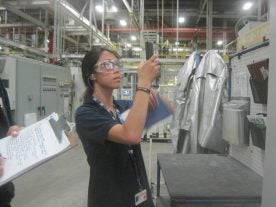Around the country, people are talking about methane. Last week hundreds showed up to testify at public hearings in Dallas and Denver, weighing in on the Environmental Protection Agency’s proposal to fight oil and gas methane pollution.
Tomorrow, EPA will hear from many more stakeholders in Pittsburgh, while a panel of experts that EDF is convening in Washington, DC, will discuss how we can cost-effectively reduce methane pollution using technologies already on the market.
The public hearings have largely reflected the concerns of local communities impacted by oil and gas industry air pollution. This is important as an overwhelming majority of voters support EPA’s proposal and view new rules as reasonable and necessary. This is hardly a surprise considering the oil and gas industry wastes over 7 million tons of methane pollution into the air every year, representing enough gas to heat 5 million homes and $1.2 billion dollars (at current prices) that could otherwise help boost our local economies. This tonnage of methane leakage also packs the same short-term warming power as 160 coal-fired power plants each year.
Though the energy waste and pollution is enormous, cutting methane emissions is not an insurmountable problem. That’s what you can expect to hear from tomorrow’s discussion hosted by The Hill titled, “Powering the Economy: A Discussion on Natural Gas, Methane Policy, and American Business.” Read More










 *
*



